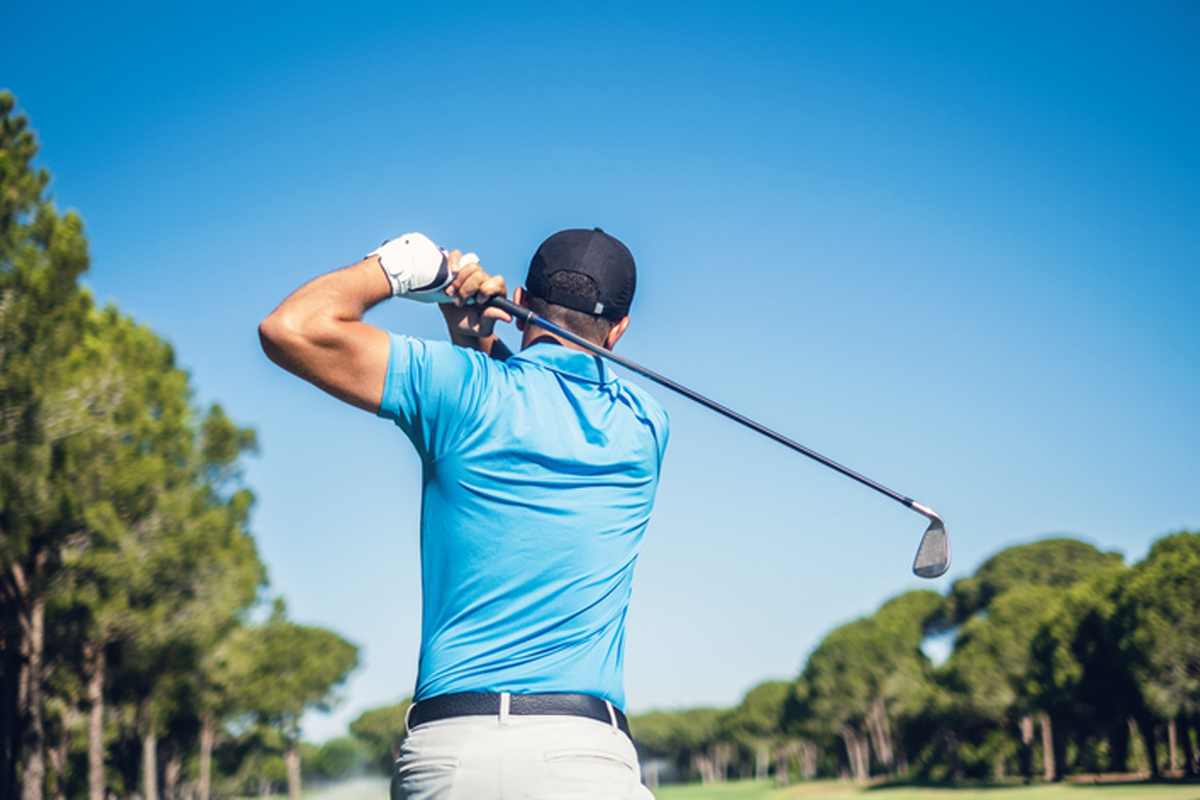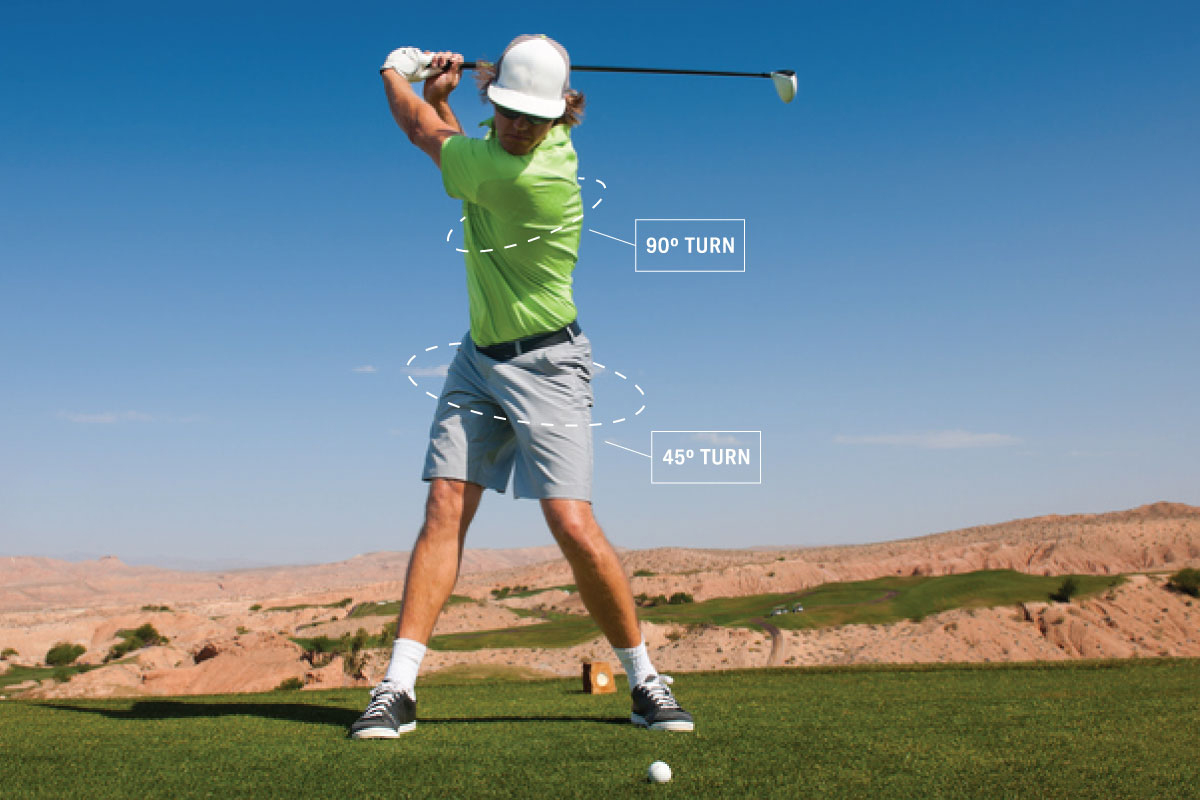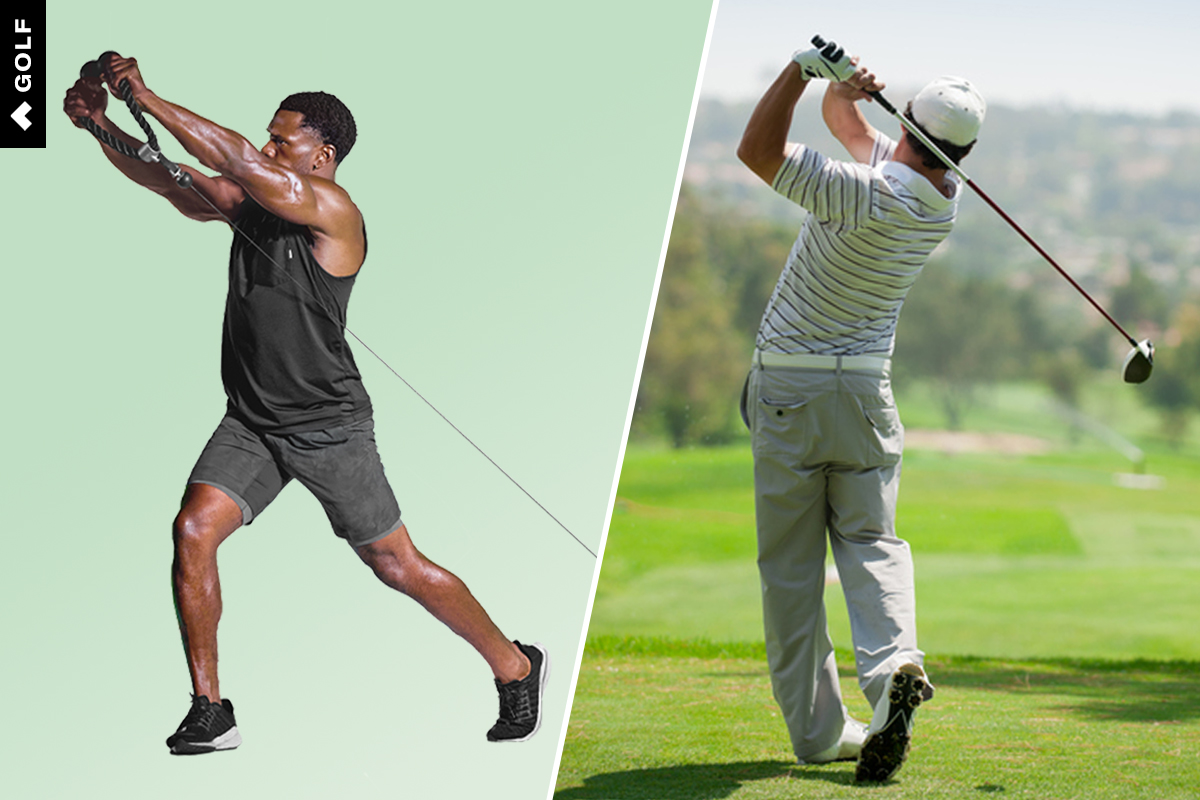Increasing internal and external hip rotation can reduce lower back pain and improve your swing.

Your hips play a pivotal role in the golf swing, and learning to properly use them can lead to both better shots and fewer injuries. However, getting the most out of your hips requires optimal mobility.
“The biggest gear in the whole sequence of the golf swing is the hips,” says Leo Rooney, director of performance at Urban Golf Performance (UGP). “They’re where the most energy can be either converted into the upper body or lost. And for most people, it’s the latter, because we sit all day in the car and at home, and the hips have become stable joints.”
If the hips rotate less than they should, the lower back, which is primarily designed to flex and extend, is forced to compensate with rotation. It must also absorb excess stress and torque that should be absorbed by the hips, which can cause discomfort. This issue is compounded if you are also lacking in mobility in the upper back, which will further tax the hips.
“If the thoracic spine and the hips don’t move well, the lower back becomes a pain sandwich in between,” Rooney says. This is why, according to one study, lower back issues account for 25 percent of all golf injuries, though incidence rates of up to 54 percent have been reported.
Here’s a primer on how the hips should work in your golf swing, and how to improve their function if they’re holding you back.
What do the hips do during the golf swing?
The hips are responsible for the transfer of power from the lower body to the upper body. Rooney says to imagine a light going through the body from the ground up. If power is transferred properly, the light will maintain 100 percent of its brightness throughout your swing. “But, if your foot mechanics are a bit inefficient, maybe the light dims to 80 percent,” he explains. “And if your hips are not rotating correctly, it drops to 50 percent, and gets more and more faded as it goes up the body because you’re losing power to inefficient movement.”
As you lift your golf club to initiate your backswing, you internally rotate your back hip as the hips close. As you move through your downswing and follow-through to your finish, you internally rotate the front hip as both hips open toward the target. But for the entirety of the golf swing, the hips should be moving primarily around the central axis of your body, as if you’re inside a paper-towel tube. There should be no exaggerated lateral movement of the hips—known as sway or slide—during the swing. That is, your hips should not move excessively toward your back foot during your backswing, or toward your front foot on your downswing. If your hips sway or slide, it is likely you lack mobility.
What happens if your hip mobility is limited?
There are a host of swing flaws that can occur if your hips are not properly rotating during your golf swing. Two of the most common breakdowns are early extension and loss of posture. Early extension is defined as any forward movement of the lower body toward the golf ball during the downswing. Loss of posture is defined as any significant alteration from your body’s original set up angles during your golf swing.
“Both of these flaws will cause you to recruit power from the arms too early in your swing, because the lower body is not able to start the downswing because the hips are not moving,” says Rooney. He further explains that the sequence of the golf swing must be: feet, legs, hips, torso, arms, hands, and then club, to properly transfer power and to get the club into position to transfer that power to the golf ball. “If you start at the top, and your sequencing isn’t correct, you’re in trouble,” Rooney says.

How do you assess your hip mobility?
While manual assessments of hip internal and external rotation performed by a trained physical therapist or fitness trainer are most accurate, you can get a general idea of your hip mobility at home. Sit tall on the edge of a chair or table. Without leaning or tilting in either direction or lifting off the chair or table, rotate the upper left thigh inward while allowing the foot to kick out. It should move outward at least 30 degrees; that’s one-third of the way to parallel with the floor. This is internal hip rotation. Next, rotate the top of the left thigh outward while allowing the foot to move inward. It should move at least 40 degrees, or almost halfway to parallel with the floor. This is external hip rotation. Repeat on the right side.
How do you improve hip mobility?
At UGP, Rooney runs clients through a hip mobility sequence designed to have an immediate impact on the ability of their hips to rotate. And while you will feel some rapid improvement after performing this routine, it must be done at least three times a week to create a lasting effect. Rooney also notes that the exercises can be done as a warm-up before heading to the course or range.
90-90 Hip Mobility Drill

Sit on the floor with both knees and hips bent at 90-degree angles, then reach your arms out in front of you and clench your fists to create tension through your body. While keeping your weight centered and the heels on the ground, slowly begin to open your trailing knee like a book. When that knee can no longer move, turn the opposite knee inward, coming to the same position on the other side. That’s 1 rep.
Do not collapse or round the lower back and do not let the hips lift off the ground. To regress this movement, put your arms behind you and press them into the ground for leverage. Do two sets of 20 reps. “This works both hips through internal and external rotation,” Rooney says. “Most people have not worked on internal rotation before, so they’ll feel a difference after the first set.”
90-90 Hip Stretch

Sit on the floor with the left knee bent at a 90-degree angle in front of you and the right knee bent at a 90-degree angle to your side. Then, bring your hands to the floor on each side of the left thigh, which is in external rotation. While keeping the back straight, lean forward slowly, opening the chest toward the thigh to stretch the glute on the left leg. Slowly rise back up and repeat. Do 2 sets of 8 reps on each side.
Half Frog With Rotation

Starting on all fours, draw your right knee out to the side while keeping the ankle in line with the knee. Extend the left leg straight out, with the sole of the foot as flat on the floor as possible and the toes aimed forward. You will feel a stretch through both adductor muscles, on the insides of the thighs. Press forward through the hands so the arms are straight, and alternately rotate the upper back to raise the right arm toward the sky, then the left. To increase or decrease intensity, raise or lower the level of the hips. Do 2 sets of 8 reps on each side. “Be sure to keep the bent knee outside the hip so you get a good stretch in the adductors,” Rooney says. “The adductors are important in golf because they help create rotation in the lower body.”
Tactical Frog With Internal Rotation

Start on all fours, then move the knees out wider than the hips and bring your butt back to your heels. While keeping the knees firmly on the ground and the back straight, lift the hips and simultaneously lift and rotate one foot off the ground and away from your body. Sit the hips back while returning the foot to the starting position. Alternate legs for 2 sets of 8 reps. If you feel a pinch in the hip, change the position of the knees. “In this exercise, it’s also important to have the knees wide enough that you feel the adductors stretch,” Rooney says. “This is a great move for internal rotation of the hip.”
Hip Decoupling

With the left knee down on the ground and the right in front of you at a 45-degree angle, rock forward into the right knee, then return to starting position. Complete 2 sets of 8 reps on each side. You can also perform this exercise with the raised knee open directly to the side. “When we sit all day, our joints get compressed,” Rooney says. “This will create space in the hip joint.”


